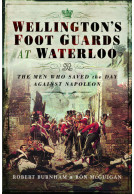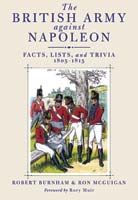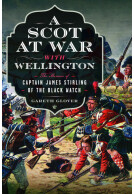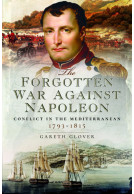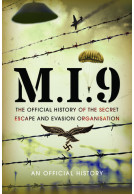The Redcoats of Wellington’s Light Division in the Peninsular War (Hardback)
Unpublished and Rare Memoirs of the 52nd Regiment of Foot

Pages: 280
Illustrations: 16 Mono
ISBN: 9781399084963
Published: 2nd February 2023
(click here for international delivery rates)
Need a currency converter? Check XE.com for live rates
| Other formats available - Buy the Hardback and get the eBook for £1.99! | Price |
|---|---|
| The Redcoats of Wellington’s… ePub (4.3 MB) Add to Basket | £6.99 |
The Light Division is rightly regarded as the most famous force within Wellington’s army in the Peninsular War. Often the first into every battle and the last to withdraw, the men of the Light Division were trained to act independently and think for themselves as well as operating in their battalion formations.
The regiments which comprised the Light Division were present at almost every battle, large or small, throughout the Peninsular War. Many people, however, associate the Light Division with the men of the 95th Rifles, wearing in the distinctive green uniforms made famous in the Sharpe novels.
What is less understood is that the majority of the Light Division actually consisted of troops dressed in the traditional red uniforms. These were men who, although equally capable of skirmishing as light infantry, actually spent the vast majority of their time formed as regular infantry, fighting in line, column or square.
The 95th Rifles has literally a dozen or more memorialists including many famous ones such as Kincaid, Harry Smith, Harris, Costello, Leach, Simmons and others, who have been published and republished countless times. But the 52nd Foot – the first of the regiments of the Light Division to be trained as light infantry – has, until now, been largely unrepresented.
After decades of research, Gareth Glover has unearthed a collection of short memoirs from soldiers of the 52nd (Oxfordshire) Regiment which have never been published before and one previously published, but now virtually unobtainable. This collection will undoubtedly add an essential element to our understanding of the role of the Light Division both in battle and on campaign.
Subtitled ‘Unpublished & Rare Memoirs of the 52nd Regiment of Foot’, this handsome volume is a companion to Mr Glover’s earlier book of memoirs by members of the 43rd Foot. It begins with a ten-page History of the 52nd Foot in the Peninsula and at Waterloo and summarises the regiment’s active service year by year, from 1809 to 1815.
Arthur Harman, Miniature Wargames
The remainder of the book is devoted to the personal accounts, which are:
Journal of Volunteer J.W. Firon at Belle Ile, Ferrol and Cadiz, 1800-1801
Letter by Lieutenant Colonel Sir John Colborne describing attacking the Upper Teson redoubt in 1812
Diary of Lieutenant Colonel John Hunt, 1812-1813
Reminiscences of Brevet Major William Rowan, 1803-1814
Letter by Major Charles Rowan describing wounding of Major George Napier at Ciudad Rodrigo 1812
Letter by Captain John Ewart describing storm of Ciudad Rodrigo
Letters by Lieutenant Charles Booth, 1805-1812
Account of Battle of Nivelles 1813 by Lieutenant George Gawler
Extract of letter by Lieutenant Edward Northey about action at San Munoz 1812
Letters by Captain Henry Dawson, 1810-1812
Letters by Lieutenant Charles Dawson, 1811-1812
Extracts from letters by Lieutenant Frances John Davies, 1808-1813
Letter by Lieutenant John Gurwood regarding taking the cannon at Sabugal 1811
Memorandum on Sabugal by Lieutenant Robert O’Hara
Journal of Corunna and Walcheren by Ensign Charles Paget
Journal 1811-1814 of Surgeon John Gibson
Narrative of life and adventures of Private Eli Gill from 1802-1814 (see Waterloo Archives Vol. XIII for his account of that battle)
Several of these accounts have been published previously. For example, the Corunna Journal of Charles Paget appeared as With Moore to Corunna in 2018, edited by Charles Esdaile, but the fuller version here includes his journal for the Walcheren expedition; Major Rowan’s letter appeared in the Life and Opinions of General Sir Charles Napier in 1857; while Captain Ewart’s letter, and the letters of Lieutenant Booth and Lieutenant Davies were originally published in various issues of the 43rd & 52nd Light Infantry Chronicle.
All the accounts benefit from numerous informative footnotes provided by the editors that would not have accompanied their original publication. However, footnotes 5, 6 and 7 on page vii of the Foreword have not been printed in the order in which the publications are listed in the text, a surprising error in an otherwise high quality book.
Eight pages of colour and monochrome illustrations, bound into the centre of the book, reproduce the illustration of an officer and private of the 52nd by Charles Hamilton Smith that appears on the dustjacket; Colonel James’s maps of the battles of Sabugal and Orthez; a print depicting the forlorn hope at Ciudad Rodrigo; the Military General Service medal of Private James Morris; the Regimental Medal for the storming of Badajoz; portraits of Sir John Moore and five officers of the 52nd, and photographs of two private soldiers.
Such memoirs and reminiscences may not have a direct application to the creation of wargame rules and scenarios, though some may offer anecdotes that can be incorporated into roleplaying games or skirmishing games like Sharp Practice, but they remind us that the battles we recreate on tabletops with model soldiers were fought by human beings, not inanimate pieces of metal or plastic, and give us a greater insight into the ‘foreign country’ that was the past. This is a volume that collectors of Napoleonic period memoirs will definitely wish to add to their libraries.
"This is a boon for skirmish wargamers a bit weary of stories from the 95th Rifles and perhaps looking for some more 'ordinary' accounts to whet their appetites and spark their imagination."
Wargames Illustrated – Issue 421, January 2023
About Robert Burnham
ROBERT BURNHAM, a retired army officer, has written scores of articles and numerous books on the Napoleonic Wars. He has recently stepped down after twenty-two years as the editor of the Napoleon Series, a fascinating and all-embracing website, the largest of its kind. It is a ‘must’ for anyone interested in the Napoleonic era. It can be accessed at: www.napoleon-series.org
About Gareth Glover
Gareth Glover is a former Royal Navy officer and military historian who has made a special study of the Napoleonic Wars for the last thirty years. In addition to writing many articles on aspects of the subject in magazines and journals, his books include From Corunna to Waterloo, Eyewitness to the Peninsular War and the Battle of Waterloo, An Eloquent Soldier, fourteen volumes of The Waterloo Archive, Waterloo: Myth and Reality, The Forgotten War Against Napoleon: Conflict in the Mediterranean 1793-1815, The Two Battles of Copenhagen 1801 and 1807: Britain and Denmark in the Napoleonic Wars and Marching, Fighting, Dying: Experiences of Soldiers in the Peninsular War.










